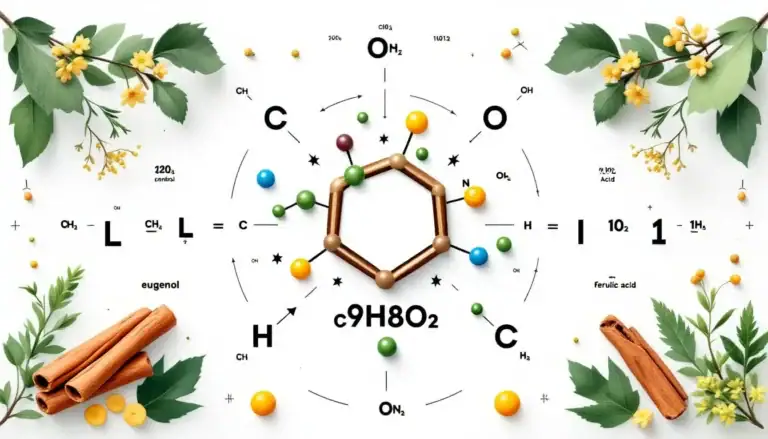You may be curious about whether your testicles keep growing as you get older, but the truth is they don’t—in fact, they often shrink slightly over time. While puberty brings noticeable growth, your testicles usually reach their full size by your late teens, averaging about 2 to 3 inches long. After 40, lower testosterone levels can reduce their volume, and factors like poor health or smoking could accelerate the process. But don’t worry—most changes are normal, though sudden shifts could signal something worth checking out. Stick around to learn what’s typical, what’s not, and how to keep everything in good shape.
The Natural Growth of Testicles During Puberty
Since you’re going through puberty, your body’s changing in ways that could feel surprising—and yes, that includes your testicles. As testosterone kicks in, they start growing, usually between ages 10 and 13, marking a key phase in male sexual development.
You may notice one testicle is slightly larger or hangs lower—that’s a normal anatomical variation. By late puberty, they’ll reach an average size of 2–3 inches long and 1 inch wide, though exact measurements vary.
It’s normal for one testicle to be slightly larger or hang lower. By late puberty, they average 2–3 inches long and 1 inch wide.
This growth often comes with other physical changes, like darker scrotal skin or pubic hair. Don’t stress should yours develop at a different pace; it’s part of the process.
They’ll settle into their mature size by your late teens, with growth slowing considerably afterward.
Typical Adult Testicle Size and Variations
You may notice your testicles fall within the average size range of 2 to 3 inches long, but it’s normal in case they’re slightly bigger or smaller.
It’s also common for one to be a little larger than the other, and this usually doesn’t mean anything’s wrong.
Unless you have pain or swelling, size differences alone rarely point to health issues.
Average Testicle Size Range
Most adult men have testicles that measure between 2 to 3 inches in length and about an inch in width, though slight variations are completely normal. Your average testicle size falls within this range, with testicular volume typically around 15-25 milliliters.
Factors influencing testicular size include genetics, hormone levels, and overall health, but these differences usually don’t impact testosterone production or fertility. It’s common for one testicle to hang slightly lower or be a bit larger—these normal variations aren’t cause for concern.
Still, regular self-exams help you monitor changes over time. Should you notice sudden swelling, pain, or drastic size shifts, it’s smart to check with a doctor to rule out health concerns. Staying aware of your body guarantees you catch anything unusual promptly.
Common Size Discrepancies
Testicles often vary slightly in size, and that’s completely normal. You’ll typically notice one is a bit larger or hangs lower than the other, with the right usually bigger than the left. Testicular volume averages 15–25 mL per testicle, but common size discrepancies are nothing to worry about unless they’re sudden or extreme.
- Natural Variations – It’s normal for testicle size to differ slightly, just like other body parts.
- Age Changes – Over time, testosterone decline can reduce testicular volume, potentially leading to testicular atrophy.
- Monitoring Matters – Regular self-examination helps spot unusual changes, like swelling or shrinkage, signaling health issues.
If you notice drastic shifts in size or discomfort, seek medical evaluation to rule out fundamental problems.
Otherwise, minor differences are just part of being human.
Health Implications of Size
While it’s normal for testicles to vary in size, these differences can sometimes signal broader health implications. Your testicular size often reflects testosterone levels and fertility—larger testicles could produce more sperm, while smaller ones might hint at hormonal imbalances or conditions like Klinefelter syndrome.
As you age, shrinking size can signify lower testosterone, affecting libido and overall health. Sudden changes, like swelling or lumps, demand attention—they might point to serious conditions, including cancer.
That’s why regular self-examinations matter, especially between ages 14 and 35. Catching irregularities promptly improves results. Should you notice persistent size shifts, consult a doctor to rule out hidden issues.
Staying aware helps you maintain better reproductive and general health.
Age-Related Changes in Testicular Size and Volume
You may be curious about whether your testicles keep growing as you get older, but they actually follow a different pattern.
After peaking in size during your late teens, they tend to shrink gradually over time. This happens because your testosterone levels drop, and the tissues inside change, sometimes becoming less firm or slightly smaller.
Testicular Size Changes
As men get older, their testicles don’t usually grow bigger—in fact, they could shrink a little over time. This change in testicular size is part of normal aging processes, often linked to lower testosterone levels and reduced sperm production.
While it’s not always a cause for concern, significant shrinkage (testicular atrophy) could signal fundamental health conditions. Here’s what you ought to know:
- Aging & Testosterone: After puberty, testicular size stabilizes, but as you age, declining testosterone can lead to gradual shrinkage.
- Health Factors: Conditions like varicocele or infections can affect size, so regular self-examinations help spot unusual changes.
- When to Act: Should you notice sudden changes in size or discomfort, schedule medical consultations to rule out serious issues.
Staying aware of these changes guarantees you catch problems promptly.
Volume and Aging Effects
Aging affects testicular volume just like it does other parts of the body. As one gets older, testosterone production slows, which can lead to testicular atrophy—a gradual shrinking of testicular size. This change often starts after 40 and might impact sperm production, potentially affecting fertility.
While testicular volume typically stays steady in younger years, age-related effects can reduce it over time, especially in cases where you have fundamental health issues. Regular health check-ups help monitor these changes and keep your reproductive health in check.
Though a slight decrease in volume is normal, sudden or significant shrinkage warrants a doctor’s visit. Staying proactive with screenings guarantees you catch any concerns promptly, so you can address them before they affect your well-being.
Hormonal Influences on Testicle Growth Over Time
Though testosterone plays a major role in testicular development, its influence changes as men grow older. During puberty, rising testosterone levels trigger testicle growth, boosting sperm production and male reproductive health.
But as you age, hormonal imbalances and declining testosterone can lead to testicular atrophy, reducing testicular size. Here’s how hormones shape your testicles over time:
- Puberty Surge: Testosterone spikes, causing testicles to grow considerably, marking the start of sperm production.
- Age-Related Decline: After 40, testosterone drops, sometimes shrinking testicles and affecting fertility.
- Lifestyle Impact: Poor habits like smoking or obesity can worsen hormonal imbalances, further altering testicle growth.
While age-related changes are natural, comprehending these hormonal shifts helps you stay aware of your body’s changes.
Health Conditions That Can Affect Testicular Size
Several health conditions can cause noticeable changes in testicle size, and being aware of what to watch for helps one stay on top of reproductive health.
Testicular cancer often leads to swelling or a lump, while testicular torsion causes sudden pain and size changes—both need prompt medical attention. Orchitis, typically from infections like mumps, can trigger swelling or discomfort.
Hormonal imbalances, especially as one ages, may shrink testicles (testicular atrophy), reducing testosterone. Health conditions like hydrocele or varicocele also alter size due to fluid buildup or enlarged veins.
When one notices persistent swelling, pain, or unusual size changes, don’t ignore it—early action makes a big difference. Regular self-checks help spot issues before they worsen. Stay informed, and don’t hesitate to talk to a doctor when something feels off.
The Link Between Testicle Size and Reproductive Health
Since testicle size plays a key role in fertility and hormone production, comprehension of what’s normal—and what’s not—can help you stay on top of your reproductive health.
Your testicular volume directly impacts testosterone production and sperm count, so changes in size could signal shifts in hormonal levels or fundamental health issues.
Here’s how it connects:
- Testosterone & Aging: As you age, reduced testosterone can shrink testicle size, affecting energy, libido, and sperm quality.
- Fertility Clues: Larger testicles often mean higher sperm counts, while asymmetry or sudden shrinkage could hint at problems.
- Health Red Flags: Conditions like hypogonadism or infections can alter testicle size, so regular checks matter.
Stay aware of changes—your reproductive health depends on it.
Signs That May Indicate Abnormal Testicle Growth
Have you noticed an unusual change in the size of your testicles? While minor variations are normal, certain signs could point to abnormal testicle growth.
A sudden increase in testicle size, especially when one side becomes larger than the other, could signal potential health problems, like a hydrocele or swelling. Pain or swelling that doesn’t fade could also be a red flag.
Should you feel lumps or changes during self-examinations, don’t ignore them—these could indicate serious conditions needing medical evaluation.
Testicular atrophy, where they shrink, might hint at low testosterone production. Keep track of any shifts, like unexpected larger testicle volume or persistent discomfort.
Trust your instincts—when something feels off, consulting a doctor is always the smart move.
How to Monitor and Maintain Testicular Health
Even though you mightn’t consider it often, keeping an eye on your testicular health can make all the difference in catching issues swiftly. Here’s how to stay proactive:
- Perform monthly self-examinations: Check for lumps, pain, or size changes after a warm shower. Timely identification boosts treatment success.
- Adopt a healthy lifestyle: A balanced diet (think zinc and vitamin D) and regular exercise support testosterone levels and overall testicular health.
- Schedule regular check-ups: Visit a urologist, especially after 40, to monitor changes and address symptoms like swelling or discomfort.
Staying aware of your body’s signals and maintaining simple habits guarantees you’re on top of your health.
Listening to your body and sticking to simple health habits ensures you stay ahead of any potential concerns.
Small steps today can prevent bigger problems tomorrow.
When to Seek Medical Advice About Testicle Size Changes
In case you notice your testicles changing in size—whether they seem larger, smaller, or uneven—it’s essential to pay attention. Sudden shifts, especially with pain, swelling, or lumps, could signal serious issues like torsion or cancer.
Don’t ignore persistent discomfort or hardness; these warrant medical advice. Regular self-examinations help spot abnormalities promptly—any odd findings mean it’s time to see a urologist.
Age-related changes, like shrinking (atrophy) or growth from fluid buildup (hydrocele), aren’t always alarming but should still be checked. Conditions like varicocele, causing swollen veins, might need treatment.
Trust your gut: Should something feel off, get it evaluated. Timely action can prevent complications, so prioritize your health and schedule that appointment. Your peace of mind matters as much as your physical well-being.
Conclusion
Consider your testicles potentially mysteriously multiply in maturity? They won’t. While puberty pumps them up, aging often leads to a slight shrinkage. Hormones, health habits, and hereditary factors can all play a part. Stay sharp—spotting sudden shifts in size or shape signals it’s time to talk to your doctor. Regular check-ups and healthy existence keep your twins in top form. Stay savvy, stay safe!





